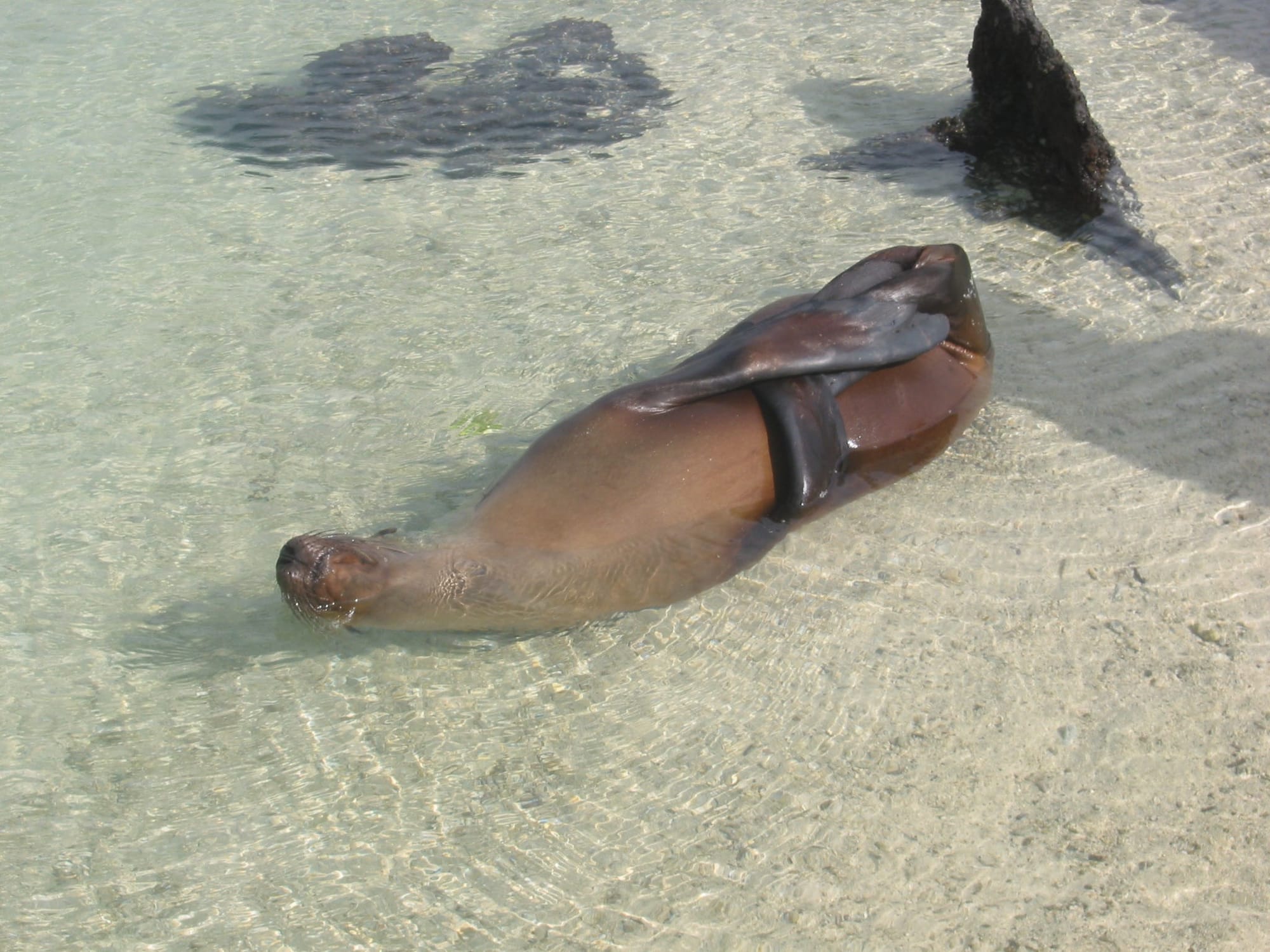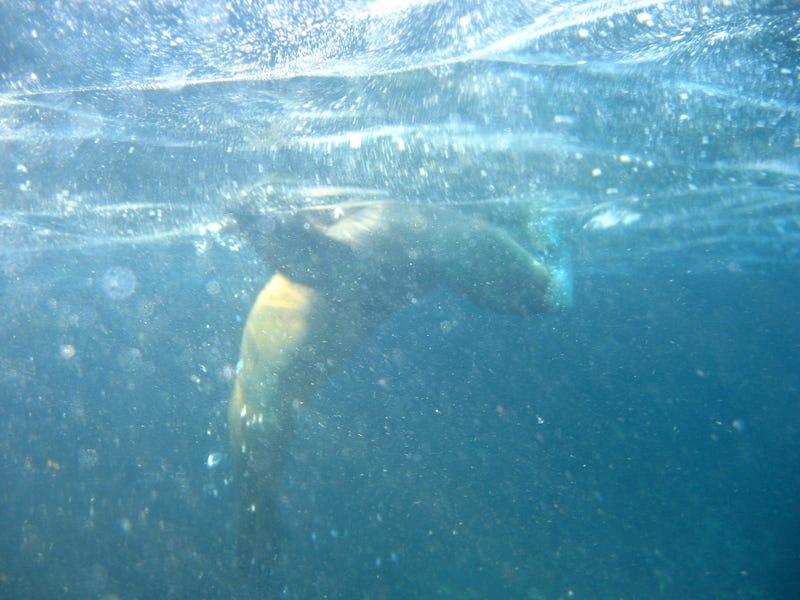
When you arrive in the Galápagos Islands, there are a huge variety of fascinating creatures to observe, including some found nowhere else in the world. My second ever story here recounted how encountering some of these put me on track to study ecology and its relationship to animal behavior. That story included some of the most famous animals and more recently, we talked about the feeding adaptations of the islands’ finches. But, unsurprisingly, I haven’t come close to exhausting the stories from there. This one occurred in front of just my brother, Nelson, so I’m going to tell it using the same method I learned about it: his underwater photos.
This story involves a species sometimes referred to as the ‘welcoming party’ of the islands: the Galápagos sea lion, Zalophus wollebaeki. At the time of our trip, many still considered it a subspecies of the California sea lion, Zalophus californianus, but more recent genetic analysis has shown it to be its own separate species. They are a common sight on beaches or rocks where they rest and sunbathe. They are a social species, rarely solitary and their playful nature makes them quite endearing. This story doesn’t start on a beach, though, but underwater, in the sea lion’s natural habitat.

My brother was snorkeling. We knew ahead of time that there would be multiple snorkeling opportunities and so we got a special ‘wetsuit’ for his digital camera so that he could use it underwater. Above we have an empty seashell, the snail dead and gone, the sole interesting object on the relatively featureless sandy bottom. This is the exact kind of thing that an inquisitive and playful individual would gravitate towards.

He noticed a young sea lion repeatedly diving to the bottom and then surfacing. While actual age is difficult to determine, younger individuals are usually more playful. As they mature, sea lions tend to become wary of humans and adults have, in rare cases, actually attacked people who got too close to them. Some of the more severe recent incidents involve territorial responses from larger adult males or due to illegal feeding of wild individuals leading to nuisance behavior (you can read my opinion on the latter here). So, what was this individual doing? It was using the seashell like a toy.

Repeatedly, my brother watched as the sea lion picked up the shell in its mouth, swam up to the surface, and then dropped it down to start the whole process over again. Furthermore, it did not simply repeat the action, but would actually vary its play, such as doing swimming flips at the surface or blowing bubbles and then swimming through them.

Now, at this point, you might be thinking, ‘that’s really neat, but why would that sea lion do that, what’s the fitness benefit for something like this?’ Those are good questions and deserve careful consideration. Keep in mind that play does not necessarily have to conform to future behavior practice. It is seen more frequently in more intelligent species, but also in more social species as well. The social importance of play is well documented in human development and it still holds true for other highly social species.
In this context, it is easier to understand this sea lion’s behavior. It is not about practicing specific techniques it will need to survive like the anhinga from last week. Rather, it is a more generalized form of play that aids in its socialization. When not foraging, sea lions tend to rest on shore in large groups. Social interactions also dominate the efforts of territorial males during breeding time. Think back yourself to some of your favorite games growing up. Did they all have a tangible, physical benefit? If you are like most people, the answer is no. Much of play is about interacting with others. This is true for humans as well as other animals.
For next week, we’re going to explore human play a bit more, especially social play. Nature Stories has usually steered clear of humans as specific subject matter and instead focused on their effects and interaction with the natural world. However, it is always important to remind yourself that you are a part of that world and not some disconnected observer. Also, much of the research into play has focused on it with regards to the human animal. This gives us some good groundwork for when we return to non-human play behaviors.
As always, thank you for reading. I hope you are enjoying this Season’s topic so far. Let me know what parts you enjoy and what could still use some improvement. I’m also always interested in hearing what sorts of topics you’d like to see me cover in the future. Please like and share this with others who might appreciate it as well.